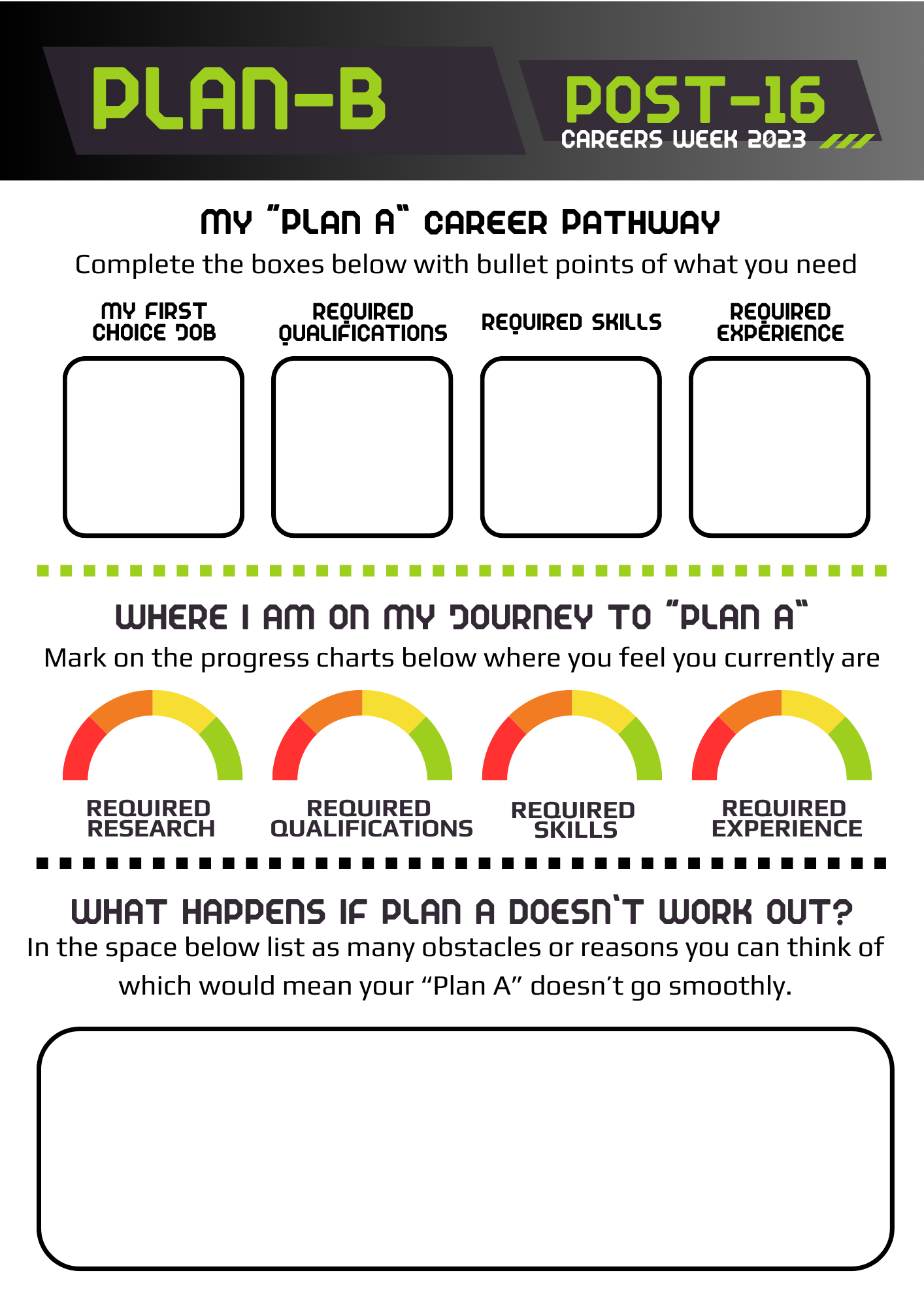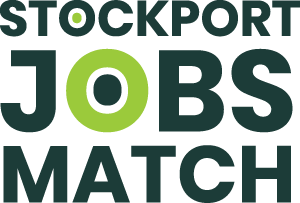My ‘Plan B’ Worksheet
As you approach the end of school or college, ready to embark on the next steps towards your dream career, it’s important to recognise that the road ahead might not always unfold exactly as planned.
While setting ambitious goals and pursuing your dreams is crucial, it’s equally important to have a well-thought-out Plan B in your arsenal. Life can sometimes surprise us, and that’s where having a backup plan comes in handy. This backup plan isn’t a sign of doubt, it’s an important planning tool that will help you to adapt, overcome obstacles, and be prepared for anything that comes your way on your journey to success.
Use our ‘Plan B’ Worksheet to help you figure out a back-up plan for your next steps and consider alternative ways to stay on track and reach your ultimate career goal.
How to use
Outline your ‘Plan A’
Start by considering your ‘Plan A’ or ideal career goal to fill in the top row of boxes. If you’re not sure of what your career goal is yet, don’t panic. You could spend some time researching your options and create a few different versions of this worksheet to explore multiple possibilities, or leave the ‘first choice job’ box blank and simply fill in the bits you do know. You could replace ‘first choice job’ with ‘first choice course’ for college or university or ‘first choice apprenticeship’ for example.
If you know which career path you’d like to follow, you’ll hopefully know the qualifications, skills and experience this job will require you to have. Use this information to fill in the remaining ‘Plan A’ boxes to build your own check-list of what you need to achieve over the next few years. If you’re not sure what the entry requirements for your chosen career path are, you can use our Career Guides to learn more or visit websites like the National Careers Service or Prospects.
Assess your current progress
Use the diagrams to assess your current progress towards achieving your ‘Plan A’ goals. Add an arrow to mark whether you need to get started (red), have made some progress (orange), are on your way (yellow) or are good to go (green). Rank yourself according to whether you have completed the required research and qualifications needed for your career goal, as well as having developed the skills and gained the experience you’ll need to progress.
Consider the obstacles
Use the free space box at the bottom of page 1 to make a list of all the potential reasons why your Plan A may fail. This could be things you do (or don’t do) or things that are completely outside of your control. For example, you may not achieve the grades you need to start a particular college course, or you could struggle to find a work experience placement that gives you the experience you need to support your applications.
Make a Plan B
Choose one of the obstacles you have identified and fill this in on the dotted line. Then use the section underneath to research an alternative way to reach the same career goal via a different study or employment pathway. For example, if you want to become an Architect and do not get the grades you need to study A-Levels in Maths, Art and Design Technology, why not consider taking a T-Level in Design, Surveying and Planning or a Level 3 BTEC Extended Diploma in Interior and Architectural Design? Where else offers the qualifications you’d like to achieve, and what are the differing entry requirements?
You can also consider related jobs or careers that may be a good starting point and allow you to work towards your original dream job over time as you gain more experience and skills. For example, it can be highly competitive to study medicine at University, but there are 100s of roles within the healthcare profession that allow you to work towards a doctorate qualification over time such as nursing cadet programmes or healthcare associate apprenticeships. Make sure you’ve explored all your options as you may even discover a study or training route you actually prefer!
Make a Plan C… and D!
Using other obstacles you identified, repeat these steps to create a few alternative paths you could take if your Plan A doesn’t work out. You’ll soon realise that there are lots of different ways to reach the same end career goal. This should help you feel prepared in case things go wrong and ensure you’re able to take quick action to get yourself back on track. Remember – even if things do go well, you may change your mind or decide to follow a different path and knowing what’s out there could be a huge advantage.
Know what support is available
Finally, spend some time researching what support is available should you need it. From career planning tools to mental health support services, we are need extra information, ideas or expertise from time to time. Think about what help you might need in different situations and look into where you would go to access it.




